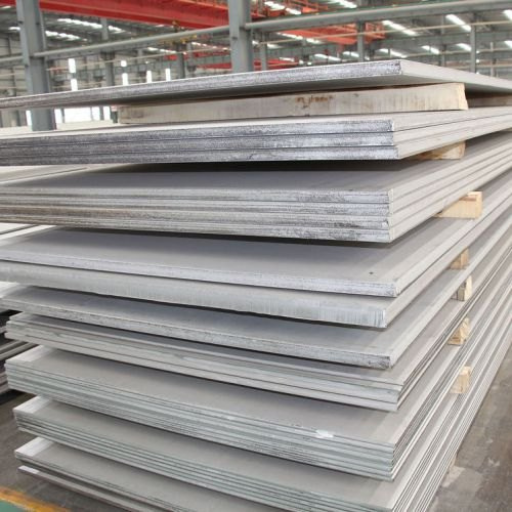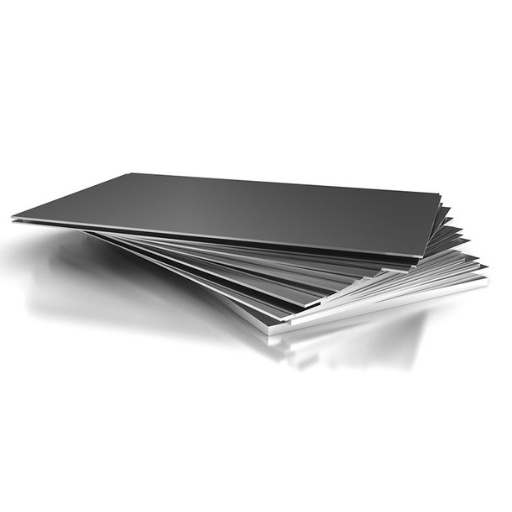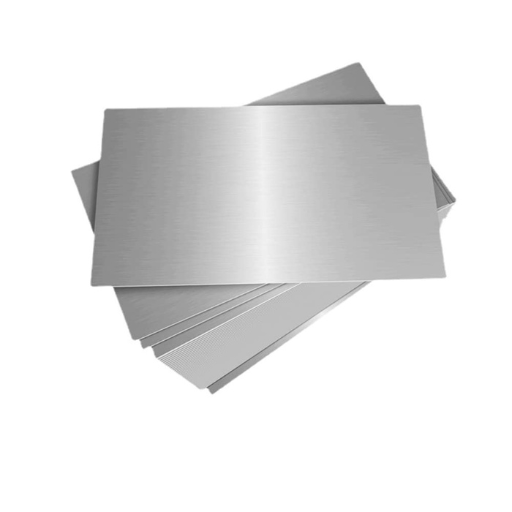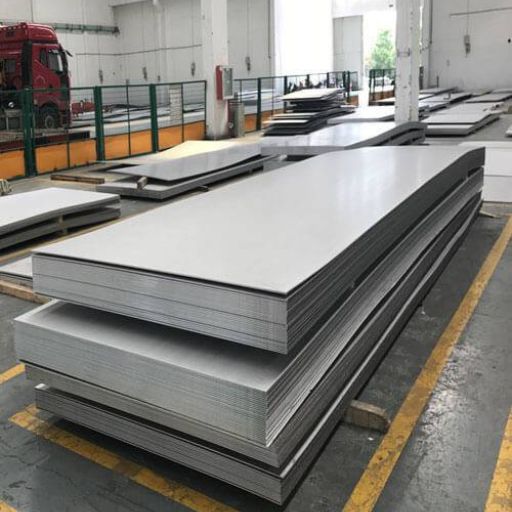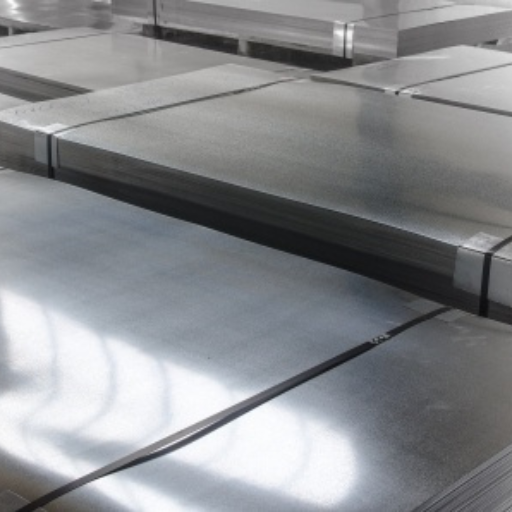Welcome to our comprehensive guide on SS Plates, specifically focusing on the 304 and 316 grades. In this blog, we delve into the intricacies of stainless steel plates, exploring their composition, properties, and applications. Whether you are a professional in the construction industry, a DIY enthusiast, or someone with a keen interest in materials science, this article aims to provide you with a clear understanding of the unique characteristics and benefits of 304 and 316 grade stainless steel plates. We will cover their manufacturing processes, key differences, and practical uses to help you make informed decisions for your projects. Let’s embark on this detailed exploration of stainless steel plates and uncover what makes these two grades stand out.
What Is a Stainless Steel Plate?
Differences Between Steel and Stainless Steel
Steel is an alloy that predominantly consists of carbon and iron, making it strong and long-lasting. Conversely, stainless steel is another variation of steel containing a minimum amount of 10.5% chromium. By adding this element, stainless steel gets its outstanding resistance to corrosion. Although normal steel can rust and corrode after some time in water, it acquires a very thin layer of chromium oxide which inhibits further rusting thus maintaining its shine. This significant dissimilarity has made stainless steel appropriate for use in places where there is exposure to moisture or corrosive chemicals.
Varieties of Stainless Steel Plates
Different grades of stainless steel plates are designed for diverse applications and needs. Examples are 304, 316, and 430.
- 304 Stainless Steel Plates: this grade is highly versatile and commonly used within various industries with the presence of eighteen percent (18%) chrome as well as eight percent (8%) nickel featured so as to enhance corrosion resistance as well as formability. Kitchen utensils like spoons and forks will require these plates because they are much stronger while artistically appealing.
- 316 Stainless Steel Plates: mostly known for its high level corrosion resistance against chlorides plus other industrial solvents, the plate comes with sixteen percent (16%) chromium, ten percent (10%) nickel as well two percent (2%) molybdenum contents.Marines can make use of them while processing chemical plants use them widely.
- 430 Stainless Steel Plates: these ones belong to ferritic family whereby about seventeen percent (17%) chromium content exist but less proportionate quantity of nickel has been included by the manufacturer They usually have moderate corrosion resistance compared to 316L and may be cost-effective.Some examples include dishwasher interiors among others.
These grades range from high strength/corrosion resistant types through cheap/free machining varieties.
Properties of 304 Stainless Steels And 316
Type 304 Stainless Steel:
- Corrosion Resistance: Excellent in a wide range of atmospheric environments and many corrosive media. However, it may be susceptible to pitting and crevice corrosion in warm chloride environments.
- Strength and Durability: It has good tensile strength and resists oxidation up to about 870°C.
- Formability and Weldability: Attractive due to ease with which it can be form or join together by welding techniques hence these characteristics makes it suitable for manufacturing purposes like building construction as well as producing containers.
- Applications: Due to its ability to be easily formed as well as its looks, it is mainly used for kitchen utensils, construction of buildings and chemical containers.
Type 316 Stainless Steel:
- Corrosion Resistance: This is much better than that of type 304 due the presence of molybdenum that provides more resistance towards chlorides acids salts etc
- Strength and Durability: Even though it is similar at room temperature, but it retains higher strength plus toughness upon being subjected into higher temperatures than 304L.
- Formability and Weldability: As with 304L this one also enjoys similar advantages except that there are higher chances of being hardened by severe working conditions.
- Applications: This steel is desirable where pitting/crevice corrosion resistance is necessary such as; Marine industry, pharmaceutical processing plants among others or places where they undergo sterilization by chemicals frequently.
Both 304 stainless steel (SS) and 316 SS have their own distinct advantages depending on their specific environmental/mechanical requirements.
How Does the Grade Affect Stainless Steel Plate Performance?
Role of Chromium and Nickel
Stainless steel contains chromium and nickel that play essential roles in its properties and characteristics. Alloy with chromium ranging from 10.5% upwards is stainless steel, which resists corrosion mainly due to the chromium. When it comes into contact with oxygen, this metal produces a very thin undetectable layer of Cr2O3 on its surface preventing further oxidation or corrosion. The alloying element which is often added to the extent of 8-10% is nickel; it enhances further the resistance of the alloy against corrosive media particularly in case when exposure occurs at acidic environment. It also adds strength and toughness to the metal, helps increase resistance against scaling and oxidation at elevated temperatures in addition to increasing ductility and weldability of the alloy . In combination both these metals guarantee a durable, versatile material, capable of standing wide range environmental attacks caused by mechanical conditions.
Significance of 304 and 316 Grades
The significance of grades 304 and 316 lies in their multiple uses as well as superior performance features. Grade 304 stainless steel is commonly used because it has excellent corrosion resistance properties, great ease for fabrication purposes, good mechanical properties among others. Therefore it finds application in kitchen equipment’s decorative finishes besides being used for architectural structures. By comparison grade 316 stainless steel has about an additional 2-3% molybdenum which substantially heightens its corrosion resistance specifically towards chlorides such as those present industrial solvents. As a result, people prefer using type numbers like that for marine applications or chemical processing plants including other places where severe conditions prevail e.g. medical devices used during various treatments and surgeries. Both types attempt to balance between cost versus functionality hence; while number 316 offers a better resistance in more aggressive environments, 304 still provides a cheaper but dependable choice for not so challenging conditions.
Impact on Corrosion Resistance
The corrosion resistance of stainless steel is explained by the formation of passive chromium oxide layer on its surface. Generally, the effect of different types upon their corrosion resistance highlights that:
The high levels of chromium in both grades of steel lead to the formation of an impervious film which enhances it’s corrosive resistivity. The additional molybdenum found in stainless type number 316 improves this steels resilience towards crevice and pit corrosion by chloride ions especially when used in marine regions and industrial locations.
Furthermore, that nickel present in these grades contributes significantly to overall corrosion resistance and strength.. Additionally, with increased amount of molybdenum that is found in 316 about (2-3%) this makes it highly resistant compared to grade 304 thereby making it suitable for chemical processing as well as other applications entailing higher concentration of chlorides.
While 304 grade has good corrosion resistance for a wide range of conditions, extra addition molybdenum in type number 316 strengthens it further against pitting among others during more aggressive local attacks.
These analyses show that while both alloys contain elements like Cr and Ni which make them resistant to corrosion; molybdenum gives type number three hundred sixteen an upper hand over number three hundred four when it comes resisting severe corroding atmosphere.
What Are Common Applications of Stainless Steel Sheets?
Uses in Marine Industry
Stainless steel sheets are used a lot in the marine industry, because they are highly corrosion resistant and durable.
The strong make-up of stainless steel sheets such as 316 grades makes them good for marine fittings like rails and cleats, and underwater/ shipbuilding components. their application in desalination plants and coastal structures due to exposure to salty environments that require materials that can survive such harsh conditions without losing their quality. acknowledges the common use of stainless steel sheets for manufacturing marine fasteners, anchors and cables which maintain structural integrity of ships and ensure safe operations. These applications exploit material’s resistance to pitting or crevice corrosion making stainless steel sheets invaluable assets in maritime trade.
Role in Chemical Processing
Because they have excellent corrosion resistance against most chemicals and can withstand high temperatures, stainless steel sheets are indispensable in chemical processing industries. Stainless steel sheet metals consisting mainly of grades 304 or 316 are often employed in fabricating tanks, pipes and reactors exposed to caustic chemicals. They are also used for making equipment where very high standards of cleanliness must be maintained e.g., those used in pharmaceutical plants or food processing units. With regards to heat exchangers and chemical containers there is a focus on the robustness of stainless steel which guarantees durability even under extremely tough working conditions. Collectively, these applications illustrate its applicability as an essential substance utilized by the chemical industry.
Applications In Beverage Industry
The beverage industry finds it necessary to use stainless sheets one example being hygiene concerns coupled with strength requirements. This implies that non-reactive substances like stainless steels dominate their production lines especially when constructing storage tanks, pipes, bottling machines among other machinery types meant for this purposes . The type such as 304 or 316 have been widely preferred because they resist acidifying agents as well as carbonated drinks thus preserving natural flavors while ensuring longevity of equipment at the same time. In beverage manufacturing facilities, stainless steel with a smooth surface prevents the growth of bacteria thus maintaining high sanitary standards. It is therefore evident that in beer brewing, soft drinks production or even water bottling processes among others; stainless sheets of steel form part of essential components to ensure purity, safety and efficiency in making beverages.
How Do Thickness and Finish Impact Stainless Steel Plates?
Understanding Many Choices of Thickness
The thickness of the stainless steel plate that you choose will greatly determine its suitability for different applications. Stainless steel plates are highly durable and have great structural integrity, making them perfect for heavy-duty activities like construction and industrial machinery. Conversely, thinner plates are more flexible and can be easily shaped or bent, which is beneficial for applications requiring intricate designs or lighter weight such as automotive and aerospace components.
There are varying thicknesses that various sectors prioritize based on their specific wants. For instance, the food and beverage sector often uses thin plates in order to make manufacturing easier and maintain high levels of hygiene. On the other hand, industries like oil extraction may prefer thicker plates that can withstand high pressures as well as harsh environmental conditions.
On welding and fabrication processes regarding stainless steel plates on the other hand, there is an influence caused by different thicknesses.Thicker ones may hence require special equipment and techniques to ensure strong, defect-free welds; however, the thinner ones may be joined with more regular methods. This necessitates understanding the balance between thickness and application requirements for optimizing performance and cost-efficiency in stainless steel usage.
Different Environments Importance Of Finish In
The finish of stainless steel plate contributes significantly to its performance depending on where it is used.That in harshly corrosive environments such as marine areas or coastal regions a smooth polished surface will enhance corrosion resistance by reducing surface area for salt or moisture accumulation.
Moreover, a highly polished mirror-like finish is often preferred in medical laboratories because it makes cleaning easier while also resisting microbial agents. It minimizes surface imperfections that could harbor bacteria or contaminants thus being suitable for maintaining sterile conditions.
Additionally such a feature as decorative trims or architectural aspects has an impact on finishing enormously.Subsequently this type of finishing provides a modern look while hiding any fingerprints or minor scratches with less need for maintenance because of brushing down.
Thus industries can optimize both functional qualities and aesthetics of stainless steel plates for specific environmental and application needs by choosing the right finish.
From Hot Rolled to Annealed
The process of converting hot rolled to annealed stainless steel involves several main stages and it provides distinct benefits. this process is the most common technique used for hot rolling stainless steel where it is rolled at high temperatures around 1,700°F (926°C) making the metal easier to form and shape. Nonetheless, it may result in a rough surface finish and residual stresses remaining in the material.
Annealing on the other hand is a heat treatment procedure that includes heating the hot rolled material to high temperature then slowly allowing it to cool down. This anneals microstructure leading to reduced hardness and increased ductility thus enhance its workability within secondary manufacturing processes. On top of that, annealing will also significantly improve surface smoothness by eliminating internal stresses created during prior hot rolling.
That means that fully softened stainless steel shows better mechanical properties with respect to formability as well as weldability thereby expanding its range of applications. This step of heat treatment becomes very crucial for applications requiring high precision as well as surface quality like automotive industry, aerospace or pharmaceuticals.
Therefore, moving from hot-rolled material into an annealed one is essential for getting better characteristics, easier manufacturing, and meeting strict requirements in different industries.
What Are Important Fabrication Considerations for SS Plates?
Weldability: The Best Practices
When it comes to welding stainless steel plates, high-quality and strong welds can only be achieved by observing the best practices. The first thing to consider is the appropriate welding process to use. Techniques such as Tungsten Inert Gas (TIG) welding and Metal Inert Gas (MIG) welding are typically recommended due to their capacity of making accurate and excellent welds.
Additionally, another step that is essential is surface preparation for the stainless steel plate which includes thorough cleaning of the surface to take away any contaminants like oil, grease or dirt as well as ensuring a proper joint fit-up that would eliminate gaps potentially weakening the weld.
The right kind of filler material should be used. To avoid problems like corrosion or cracking, it is advisable that the filler material closely matches with that of base metal’s composition. Moreover, while working on stainless steel overheating should be prevented since this could cause deformation or loss of corrosion resistance.
There might be some post-weld treatment such as passivation which will help in restoring corrosion resistance in welded areas. Well done post-weld cleaning ensures not only strong but also aesthetically pleasing welds thus suitable for critical applications.
Problems Associated with Heat Treatable Grades
Heat treatable grades of stainless steel present unique challenges that require careful consideration. One significant issue is potential thermal distortion and residual stresses that might affect dimensional stability and mechanical properties of the material. Maintaining uniformity during heat treatment process is also a challenge because changes in temperature or cooling rates may lead to inconsistent hardness and ductility across different parts. There is also need for protective atmospheres or after-treatment cleaning because heat treatable grades are more prone to oxidation and scale formation than other types of stainless steels Lastly, controlling heating-cooling cycles with precision becomes more important as the desired balance between strength, toughness, and corrosion resistance becomes more difficult and time-consuming.
Custom Cut to Size Options
Precision and flexibility are the most important factors in custom cutting stainless steel. The best service providers have a wide range of options including laser cutting, waterjet cutting, and plasma cutting to make sure project-specific cuts that are highly precise and clean. These services work with a variety of stainless-steel grades and thicknesses allowing tailored shapes that don’t compromise on the material’s properties.customers can input their desired dimensions and choose the grade of stainless steel they want for use in their applications. They can also get instant quotes as well as expedited shipping so that both generic and customized orders are processed fast.
Moreover, these vendors often follow strict quality assurance processes besides offering such additional amenities as deburring or polishing thus ensuring delivery of products fabricated in compliance with the set standards for intended use.
Frequently Asked Questions (FAQs)
Q: What distinguishes 304 from 316 stainless steel plates?
A: The main contrast between 304 and 316 stainless steel plates is their composition.316 alloy has molybdenum that enhances its resistance to corrosion, especially by industrial chemicals and chlorides. 304 stainless steel sheets are used for their excellent performance as well as cheapness while places of application necessitate better corrosion resistance pick the 316 variant.
Q: What standard sizes are available in regard to stainless steel plates?
A: There is a wide range of standard sizes for our stainless plate products but the commonest ones are from 48” x 96” up to about 60” x120”.Many other sizes including custom sizes can be manufactured depending on what you want. For exact dimensions, please give us a call and talk to us about your needs so that we let you know which standard size options we have.
Q: How can I get more product details for stainless steel plates?
A: For any specific product details concerning our stainless steel plates, whether they are of grades 304 or 316, please talk to us. To help in figuring out which material best fits your applications based on specifications, availability and pricing; we provide comprehensive information.
Q: What alloys are contained in 304 and 316 stainless steel plates?
A: On average, there is an approximate chromium content of eighteen percent with eight percent nickel in case of yield strength values for grade SS 304L whereas chromium amounts to sixteen percent along with ten percent nickel besides two-three percent molybdenum typically found within grade SS 316.Furthermore, these offer high degree of resistance against corrosion hence ensuring durability hence can be used in areas where such demands apply.
Q: Can I use both types of stainless steel plates when working with foodstuff?
A: Both kinds of plate material (food processing) that have been referred here exhibit scarce propensity towards acid foods and alkaline detergents on which account 304 is more general whereas 316 would be preferred in situations where there are contacts with seawater or very aggressive materials.
Q: What are the advantages of using low carbon versions like 304L in stainless steel plates?
A: These are plates produced from stainless steel grade SS 304L, which is a low-carbon modification of ordinary SS 304. This property makes it an outstanding choice for applications that require extensive welding or that involve the risk of corrosion occurring at weld points. There is also more about benefits and applications of 304L that you can learn by placing a call to us today.


